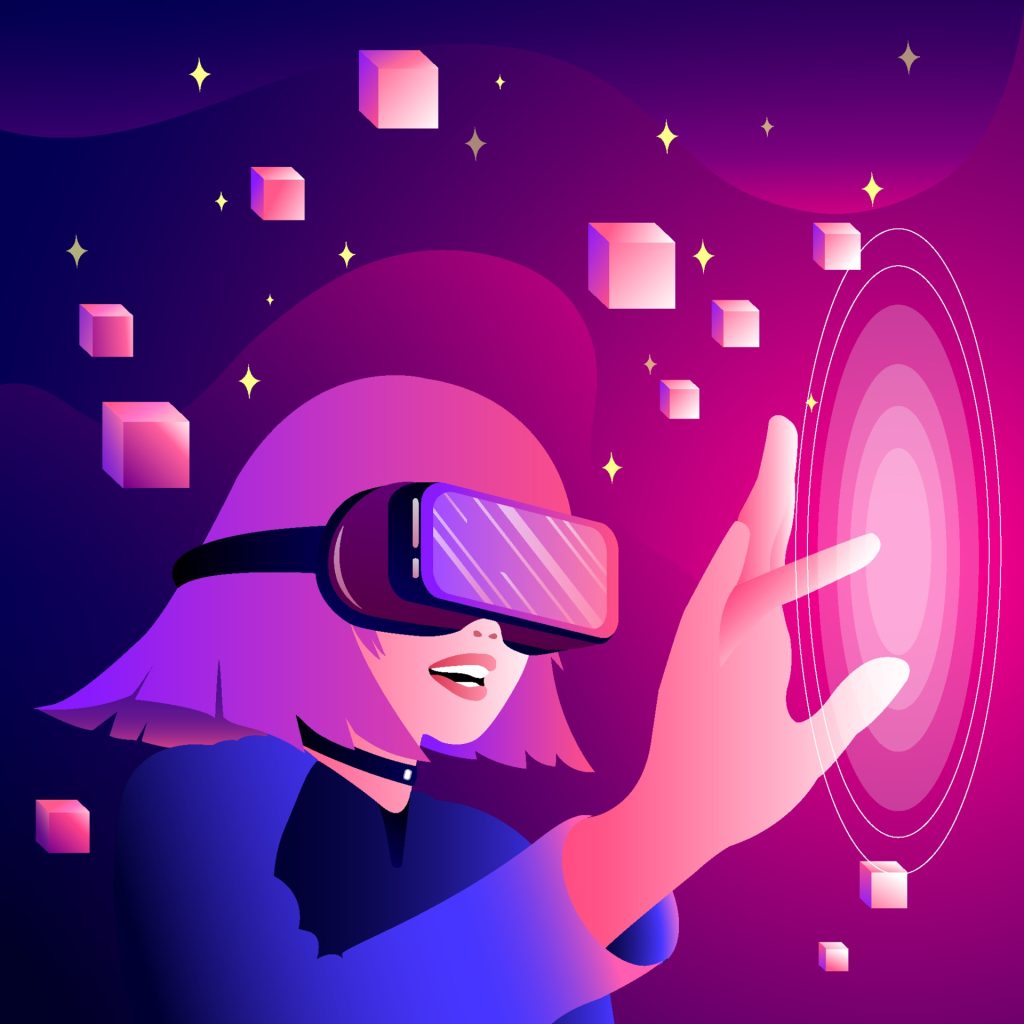“You want ask, so ask.”
“Are you real?”
“Well, if you can’t tell, does it matter?”
This question is a central theme in HBO’s TV series Westworld, a dystopian science fiction about a Wild-West-themed amusement park hosted by lifelike androids, in which the wealthy can live out their most twisted fantasies without consequence…or so it seems.
The recent breakthroughs in generative AIs like DALL·E 2 and ChatGPT have brought this quandary rocketing into the present day, producing artworks and text responses indistinguishable from those made by humans. Virtual reality (VR) has also seen a surge in commercial interest, with Meta spending more than $10B annually on the Metaverse. While existing VR experiences fall short of complete immersion, many feel it is only a matter of time before the differences with the non-digital world become imperceptible.
For many, these developments create a strong feeling of unease independent of the practical concerns regarding copyright and unemployment. They fear that these products violate the sanctity of genuine human experience in some way and that we are gradually losing touch with reality. This sentiment is by no means a new one. Science fiction has echoed these concerns for decades, from The Matrix to Aldous Huxley’s Brave New World. However, these fears are often irrational, exaggerated and based on overly narrow notions of what makes something “real”. On the contrary, these products have the potential to enhance reality and human experience – not diminish it.
A Whole New World
Before addressing these concerns, it’s worth exploring how these developments can be leveraged for good. In many of the applications described below, the technology is still far from being indistinguishable from its analogue counterparts. However, many of them have already proven beneficial despite this, indicating that further realism would only bolster their effectiveness.
The range of possible applications for VR extends far beyond video games like Beat Saber. For example, VR could increase the effectiveness of education by creating immersive environments for students to learn more intuitively. This is especially relevant in cases requiring a three-dimensional perspective, such as in architectural design, and when in-person viewings are either impractical or impossible, such as a nuclear power plant. These applications extend to healthcare, both to study human anatomy when cadavers are in short supply and train surgeons without risk to living patients. Tourism is another sector set to benefit from VR technology, which could act as a marketing tool for countries or a way to preserve threatened heritage sites. Finally, VR has the potential to connect us, making it possible to engage in shared experiences with friends, loved ones and colleagues regardless of where they are in the world while transcending the limitations imposed by video calls.

The positive applications for realistic AI extend beyond the digital domain to social robotics, creating new opportunities for companionship and care. Early research indicates that physically embodied AI companions are perceived more favourably than disembodied ones. There is also a growing interest in using social robots for elder care and dementia patients to increase levels of independence and well-being. As the gap between social robots and human caretakers narrows, it seems likely that these benefits will only grow in significance.
AI-powered realism has the potential to revolutionise art and entertainment, enhancing creativity, diversity and immersion. Stable diffusion methods such as DALL·E 2 can generate abstract and realistic artworks based on text descriptions. Nvidia’s Canvas makes it possible to create photorealistic landscapes with a few brush strokes. Natural language models such as ChatGPT can write poems or perhaps lyrics to accompany a song composed by Google’s MusicLM. Deepfake technology has many applications in cinema, such as ageing/de-ageing actors, removing profanities and lip-syncing for other languages, all while avoiding costly reshoots.

An AI artist, unknown and unseen,
Creates with circuits, wires, and screens,
Its art is digital, its form unique,
But its value is often left to critique.
It paints with pixels,
And sculpts with code,
But few take notice,
Of the beauty bestowed.
Works by DALL-E & ChatGPT
Deepfake technology is a synthetic form of media in which the face of a person in an existing video or image is replaced by another or altered in some way.
Deepfakes have also shown promise in therapeutic contexts. Grief therapist Roshan Nejal has utilised deepfakes to create interactive video sessions where people can talk with their deceased loved ones, providing much-needed comfort and closure. Furthermore, early research has shown promise in easing negative emotions and restoring social bonds for victims of sexual violence. Deepfake technology allowed two participants to confront the perpetrator, played by the therapist, over an interactive ZOOM session. Despite being aware that the perpetrator was fake, both participants reported an increase in positive emotions like self-forgiveness and less negative emotions and PTSD symptoms.

Perhaps the most significant advantage is that many of the benefits described above would be widely accessible, allowing a broad range of people to have these experiences at lower costs. For example, the infrastructure required to give students in remote locations access to online VR education would likely be less costly than building an entire school or campus, thus making quality education more accessible.
Common Concerns
So far, virtual reality and AI-powered realism may seem like nothing but a cornucopia of pleasures and benefits. However, many do not share this viewpoint, wary of the troubles such technology might unleash. Some of these concerns are valid and are worth taking into account, while others are the product of outdated ideas and the inertia of the status quo. These criticisms typically fall into one of three broad categories.
“This technology is highly susceptible to abuse by self-interested parties or those with malicious intent. Deepfakes can be weaponised, using a person’s likeness without their consent for profit, defamation and fake news. AI art software relies on the creations of thousands of real artists, using them without permission or compensation. The companies behind virtual reality products will be able to control our subjective experiences like never before, opening the door for manipulation and privacy violations.”
These are valid concerns and are worth taking into account when developing these technologies. However, all powerful inventions are a double-edged sword in this way, with the potential for good bringing with it the potential for abuse. In principle, this is an insufficient reason to forgo technological progress. With careful foresight and planning, these threats can be kept to a minimum via the use of appropriate regulations and ethical policies.
“Art is more than the final product. It’s about the history, the artist’s soul and the expression of their emotions, ideas and experiences – all of which are communicated through the artwork itself. A human artist is critical for true art, meaning that digital art can never be valued in the same way.”
This is no less true for AI art. The stories, desires and emotions behind the artwork could still be those of the digital artist using these AI tools, or they could be equally fictional. Whatever additional context is missing could, in theory, be generated in much the same way as the artwork itself. The insistence that the “human element” is an essential component of authentic art is a symptom of our anthropocentric bias, the idea that we are in some way uniquely superior. Furthermore, the art industry has shown greater acceptance of digital art in recent years, including the record-breaking $69.3 million sale of “Everydays: The First 5000 Days” by Beeple.
“However convincing a simulated reality or AI product may be, it will never be truly real. Such a thing would be devoid of meaning and genuine experience, replacing what we have with a diluted reflection of the world. We will grow apart, absorbed in our digital worlds, and our ability to form meaningful connections in the physical world will degenerate.”
On the contrary, we would be more connected than ever. The possibility of enjoying virtual experiences brings with it the possibility of enjoying these worlds together. More importantly, this is a limited definition of “reality”. Events that occur in a simulated environment really do happen in a literal sense, albeit in a different medium. The shift from a non-digital experience to a digital one would represent a change to the nature of reality, not a departure from it.
Food For Thought
Before returning to your reality, consider the following thought experiment. Bring to mind a meaningful experience from some point in your life. It could be anything; a hike through the countryside, an elegant artwork, a rivetting book, or perhaps even this article. How would your attitude towards this experience change if you learnt that it took place within a simulation or was entirely the product of AI, right down to the finest detail? Would that make its contribution any less meaningful? Any less real? Caveats aside, perhaps this article has convinced you that the answer to the latter two questions is not a resounding “YES” and that the dichotomy between the “real” and the “artificial” is often a false one.



